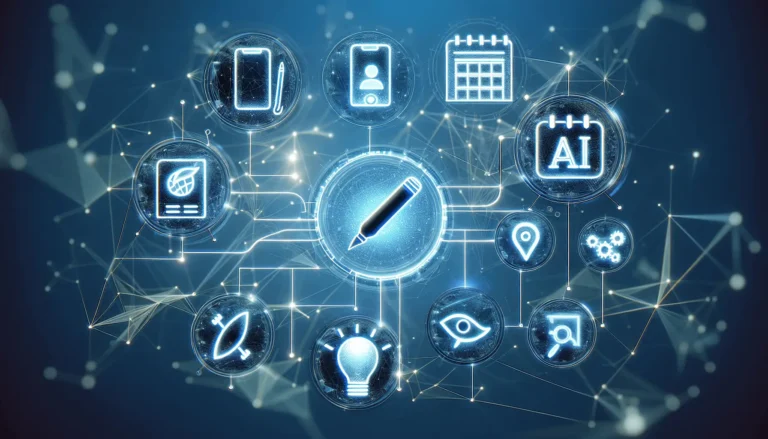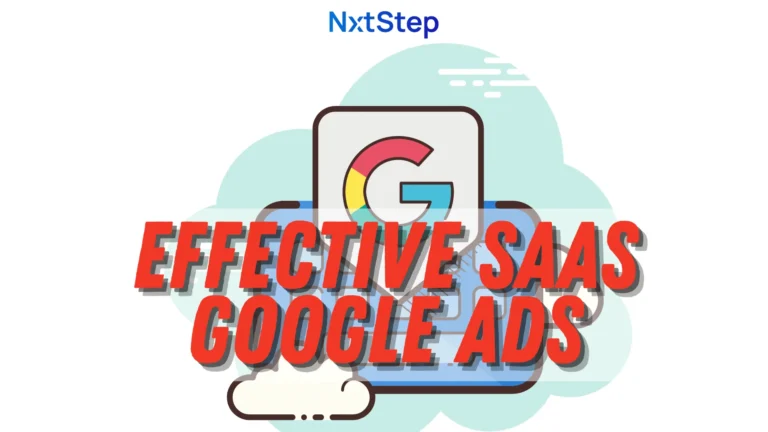What is a B2B SaaS Business Model
A B2B SaaS business model is the design and implementation of how the business makes money.
B2B SaaS Business Model Explained
A B2B SaaS (Software as a Service) business model is a type of business model where a company provides software services to other businesses on a subscription basis. In this model, the software is not owned by the customer but rather accessed over the internet. The software is hosted on the provider’s servers, and the customer pays a monthly or yearly fee for its use.
This model is gaining popularity due to its many benefits, including lower upfront costs for the customer, faster implementation and deployment, and greater scalability. It is also easier for the provider to update and maintain the software, ensuring that the customer always has access to the latest features and functionality.
B2B SaaS companies typically focus on providing software solutions for specific industries or business functions, such as accounting, customer relationship management, or supply chain management. They may also offer customization and integration services to tailor the software to the unique needs of each customer.
To be successful in this model, B2B SaaS companies need to have a strong focus on customer service and support, as well as a solid marketing strategy to attract and retain customers. They also need to be able to constantly innovate and improve their software offering to stay ahead of competitors and meet the evolving needs of their customers.
The business model canvas is a great resource for designing and building a business model.
B2B SaaS Business Model Examples
There are several types of business models in B2B SaaS, each with its own unique characteristics and advantages. Here are some of the most common types:
- Flat-rate subscription pricing: This model charges a fixed fee for the use of the software, regardless of the number of users. It can be a good option for companies with a predictable level of usage, but it may get expensive to offer if there are a lot of users.
- Per-user (seat) pricing: In this model, the customer pays a fee for each user who accesses the software. This can be a simple and transparent way to charge for the service, but it may get expensive fast for a larger organization with many users.
- Freemium: This model offers a basic version of the software for free, with additional features available for a fee. It can be a good way to attract new customers and build a user base, but it can also be challenging to convert free users into paying customers.
- Pay-as-you-go: This model charges the customer based on their actual usage of the software, often with a minimum monthly fee. It can be a flexible and cost-effective option for companies with variable usage patterns, but may make your revenue unpredictable.
- Tiered pricing: This model offers different levels of service at different price points, with additional features and functionality available at higher tiers. It can be a good way to cater to a range of customer needs and budgets, but may require more management to keep it organized.
- Value-based pricing: This model charges the customer based on the value they receive from the software, rather than simply based on usage or features. It can be a more complex model to implement, but it can also lead to higher customer satisfaction and loyalty.
Each of these business models has its own advantages and challenges, and the right choice will depend on factors such as the target market, the competitive landscape, and the goals of the company. It’s also very common for B2B SaaS companies to combine one or more of these options to design the business model that’s right for their p
Strengths of the B2B SaaS Business Model
Unlimited Scaling Potential
B2B SaaS businesses have unlimited scaling potential due to the nature of the software. Since the software is delivered over the internet, it can be accessed by an unlimited number of users without significant infrastructure or hardware changes. This means that a B2B SaaS company can onboard new customers and scale their business without incurring significant costs or delays.
Additionally, the recurring revenue model of B2B SaaS businesses provides a predictable and stable revenue stream that allows for better financial planning and investment in growth. As the customer base grows and the business becomes more established, the provider can invest in marketing, sales, and customer service to further accelerate growth.
Another advantage of the B2B SaaS business model is the ease of updating and improving the software. Since the software is hosted on the provider’s servers, updates and new features can be quickly rolled out to all customers, ensuring that they always have access to the latest and most advanced functionality.
According to a study done by BCG, while the tech industry may be cooling off in 2023, B2B SaaS is projected to accelerate progress at a steady rate.
Overall, the B2B SaaS business model provides a unique combination of scalability, predictability, and flexibility that makes it an attractive option for entrepreneurs and investors looking to build a successful and highly profitable business.
Straightforward Onboarding
Onboarding for B2B SaaS companies is easier due to the cloud-based nature of the software infrastructure. Since the software is hosted on the provider’s servers, there is no need for the customer to install or configure any hardware or software. This means that the provider can quickly onboard new customers without the need for lengthy installation processes or complex integrations.
Additionally, B2B SaaS companies typically offer user-friendly interfaces and intuitive workflows that make it easy for customers to get up and running quickly. This can help to reduce the learning curve and improve the customer experience, leading to higher satisfaction and retention rates.
Furthermore, some B2B SaaS companies offer extensive training and support resources to help customers get the most out of their software. This can include online tutorials, knowledge bases, and dedicated customer support teams that are available 24/7. By providing these resources, B2B SaaS companies can further streamline the onboarding process and ensure that customers are successful and satisfied from day one.
Overall, the cloud-based nature of B2B SaaS solutions, coupled with user-friendly interfaces and comprehensive support resources, makes onboarding for these companies easier and more efficient than other business models.
Financial Predictability
The finances of B2B SaaS businesses are more predictable due to the recurring revenue model. Since customers pay a monthly or yearly fee for access to the software, the provider can accurately forecast their revenue stream and plan accordingly. This provides financial stability and predictability, enabling the business to invest in growth strategies and make long-term plans.
Moreover, since the software is delivered over the internet, the provider incurs lower infrastructure and maintenance costs compared to traditional software solutions. This means that the profit margins for B2B SaaS companies are typically higher, further contributing to their financial predictability.
In addition, many B2B SaaS companies offer different pricing tiers or options, allowing customers to choose the level of service that best fits their needs and budget. This can help to attract a wider range of customers, further contributing to the predictability of the revenue stream.

Finally, the subscription-based model of B2B SaaS businesses can also lead to higher customer retention rates. Since customers pay for ongoing access to the software, the provider has a vested interest in ensuring that the software is continuously updated and improved to meet their needs. This focus on customer satisfaction can result in higher retention rates and lower churn, further contributing to the predictability of the revenue stream.
Review a benchmarking report created by Bessemer Venture Partners on how SaaS companies remain operationally efficient when scaling to and beyond $100 million in ARR.
Overall, the recurring revenue model, lower costs, pricing flexibility, and focus on customer satisfaction make the finances of B2B SaaS businesses more predictable and stable.
Weaknesses of the B2B SaaS business model
Unknown Key Metrics (LTV, CAC)
Measuring LTV (Lifetime Value) and CAC (Customer Acquisition Cost) is crucial for B2B SaaS companies. These metrics are important to understand the effectiveness of their marketing and sales strategies. However, calculating these metrics is not always easy.
Firstly, some high-touch B2B SaaS companies have a more complex sales process that involves multiple touchpoints and decision-makers. This makes it difficult to accurately attribute the cost of acquiring a customer to a specific marketing or sales activity, resulting in a higher level of uncertainty when calculating CAC.
Secondly, the revenue generated from each customer in a B2B SaaS model varies widely based on factors such as the size of the organization, the length of the contract, and the level of usage. This makes it harder to predict the LTV accurately and requires companies to analyze data over an extended period to arrive at a reliable estimate.
Furthermore, the nature of the B2B SaaS model means that customers can churn at any time, which affects their LTV. This makes it necessary for companies to track and analyze churn rates continually, further complicating the calculation of LTV.
Finally, B2B SaaS companies often require significant upfront investment in product development and marketing, making it challenging to recoup those costs in the short term. This can result in a higher CAC, especially for startups, which may not have a well-established reputation or brand recognition.
Despite these challenges, it is essential for B2B SaaS companies to track and optimize their LTV and CAC. By doing so, they can identify areas for improvement in their marketing and sales strategies and make data-driven decisions to drive growth and profitability. To overcome these challenges, B2B SaaS companies can work on refining their sales process, collecting and analyzing data more rigorously, and investing in customer success programs to reduce churn and increase LTV.
Less Flexibility & Customizability
B2B SaaS business models are typically less flexible than custom software solutions due to their cloud-based nature. Since the software is hosted on the provider’s servers, customers do not have the same level of control over the software as they would with traditional on-premise solutions.
For example, customers may not be able to customize the software to meet their specific needs or integrate it with other software solutions they use. This can be particularly challenging for companies with complex workflows or unique requirements.
Furthermore, B2B SaaS companies often offer a limited set of features and functionality, which may not be sufficient for all customers. While some companies may offer customization or integration services, these may come at an additional cost or require more time to implement.
Another factor that limits the flexibility of B2B SaaS models is the subscription-based pricing structure. Since customers pay a recurring fee for access to the software, they may be locked into a long-term contract and unable to adjust their usage or pricing based on their changing needs. This can be frustrating for customers who may feel like they are not getting the most value out of their investment.

Moreover, B2B SaaS companies often have strict terms and conditions around their software usage, which can limit a customer’s ability to make changes to the software or use it in certain ways. This can be particularly challenging for companies in highly regulated industries, where compliance requirements may conflict with the terms of the software license.
Overall, while B2B SaaS business models offer many benefits, such as lower upfront costs and faster implementation, they can be less flexible than custom software solutions. Companies considering a B2B SaaS model need to carefully evaluate their specific needs and requirements to determine if this model is the right fit for their business.
Growth Sucks Cash
B2B SaaS growth can cause cash flow issues due to several factors. Firstly, B2B SaaS companies often require significant upfront investment in product development, marketing, and sales, which can lead to negative cash flow in the short term. This is because the company may not immediately generate enough revenue to cover these costs, resulting in a cash flow deficit.
Secondly, as B2B SaaS companies grow, they may need to invest in additional infrastructure and resources to support their expanding customer base. This can include hiring more employees, investing in new technology, and expanding hosting capacity. These investments can be costly and may further strain the company’s cash flow.
Moreover, as B2B SaaS companies acquire new customers, they may need to offer discounts, incentives or introductory pricing to attract them. While these discounts may help to drive growth, they can also reduce revenue and profitability in the short term, further negatively impacting cash flow.
Furthermore, as B2B SaaS companies scale, they may need to invest in new marketing and sales strategies to reach new customers and retain existing ones. These strategies can be costly and may not immediately generate a return on investment, adding to challenges related to cash flow.
Read a report about a study conducted by SaaS Capital over more than 1,500 SaaS companies to better understand what percentage of revenue is being spent where to manage growth.
Finally, B2B SaaS companies may face challenges in collecting payments from customers, particularly in industries where payment delays are common. This can further impact cash flow and make it challenging for the company to operate effectively.
To address these cash flow issues, B2B SaaS companies can take several steps. These include monitoring and controlling expenses, securing additional funding through equity or debt financing, optimizing pricing strategies to improve margins, and improving customer payment terms and collections processes. By taking these steps, B2B SaaS companies can manage their cash flow effectively and continue to grow and scale their business.
SaaS Business Model Case Studies
There are many successful B2B SaaS companies that have developed robust business models. Here are a few examples:
- Salesforce: Salesforce is a cloud-based CRM software that helps businesses manage their customer relationships. Their B2B SaaS business model relies on a subscription-based model with recurring revenue. Customers pay a monthly or annual fee for access to Salesforce’s platform, which includes various features such as marketing automation, customer service, and analytics.
- HubSpot: HubSpot is an inbound marketing platform that provides a suite of tools for businesses to attract, engage, and delight customers. They offer a freemium model, allowing businesses to use their basic features for free, and then upsell premium features through a subscription-based model. HubSpot’s revenue is primarily driven by their subscription-based model, with customers paying a monthly or annual fee for access to additional features.
- Slack: Slack is a team communication platform that allows businesses to communicate and collaborate seamlessly. Their B2B SaaS business model also relies on a freemium subscription-based model, where customers pay a monthly or annual fee for access to additional features such as unlimited messages and integrations with other tools.
- Zoom: Zoom is a video conferencing platform that allows businesses to host virtual meetings, webinars, and online events. Their B2B SaaS business model also relies on a freemium subscription-based model, where customers pay a monthly or annual fee for access to additional features such as larger meeting sizes and cloud storage.
Overall, these B2B SaaS companies have developed successful business models that rely on recurring revenue through subscription-based models. They offer various features and pricing plans to cater to different business needs, ensuring customer satisfaction and loyalty.
B2B SaaS business Model FAQ
What is a B2B SaaS Business Model?
A B2B SaaS business model is the design and implementation of how the business makes money.
What are the Important B2B SaaS Business Model Components?
The important components of a B2B SaaS business model are pricing structure, customer onboarding process, customer support and training resources, and marketing strategies. For a deeper dive on metrics that matter for B2B SaaS, see my related article on the topic.
How do I Know My B2B SaaS Business Model is Healthy?
To determine if your B2B SaaS business model is healthy, you need to examine several factors such as customer acquisition cost (CAC), lifetime value (LTV), and churn rate. You also need to measure key performance indicators such as revenue, profit margins, and customer satisfaction. By tracking these metrics over time, you can identify areas for improvement and take steps to optimize your business model.
How do I Optimize My B2B SaaS Business Model?
To optimize your B2B SaaS business model, you should track and analyze your LTV/CAC metrics, refine your sales process, invest in customer success programs to reduce churn and increase LTV, and explore different pricing options.
Summary
B2B SaaS business models offer several advantages such as lower upfront costs, faster implementation, scalability, and financial predictability. However, they also have some weaknesses such as less flexibility and customizability, difficulty in measuring key metrics (LTV/CAC), and cash flow challenges due to growth. To be successful in this model, you need to carefully evaluate your specific needs and requirements to determine if it is the right fit for your business. Additionally, you need to track and optimize key metrics such as LTV/CAC and customer satisfaction to ensure growth is sustainable.


